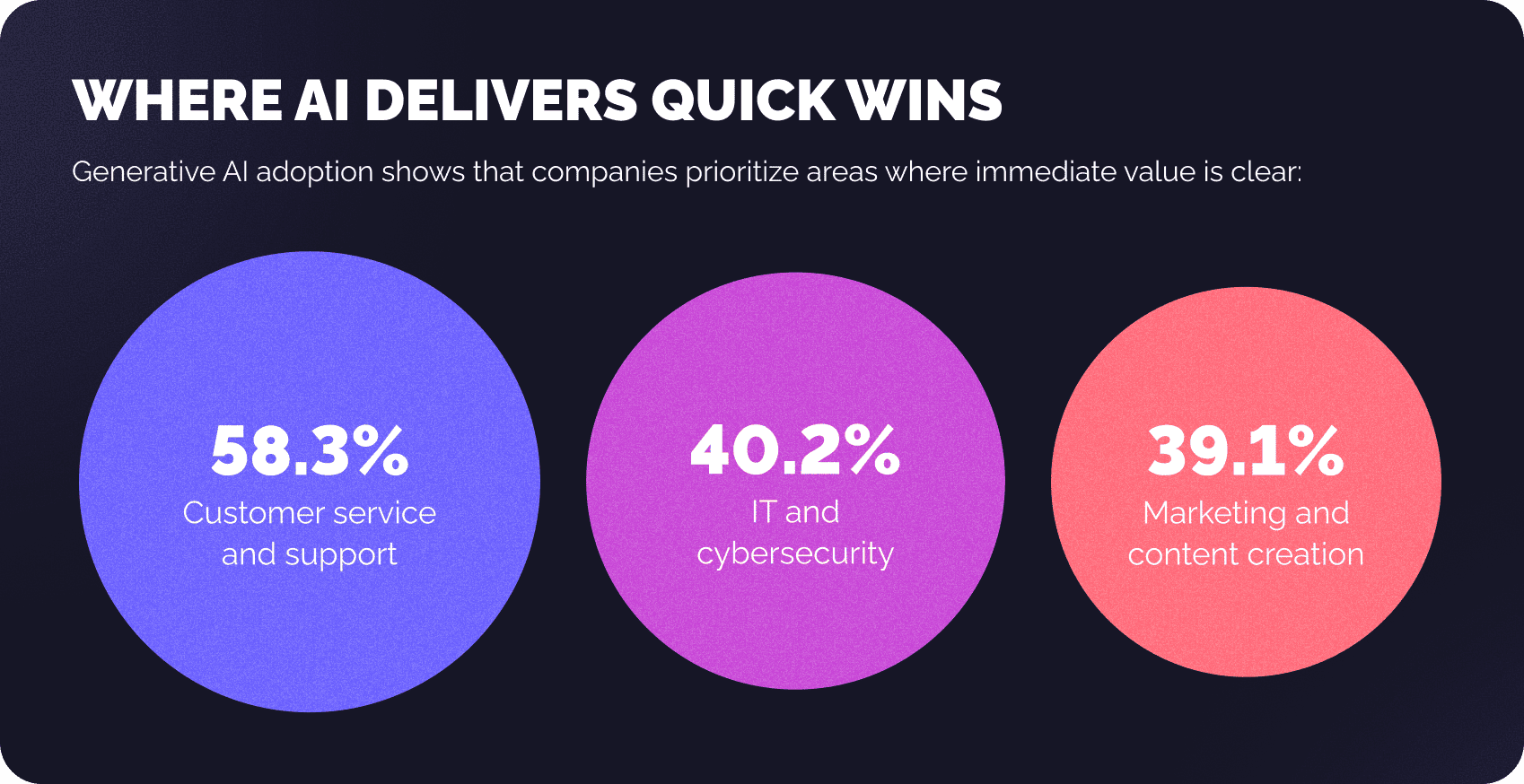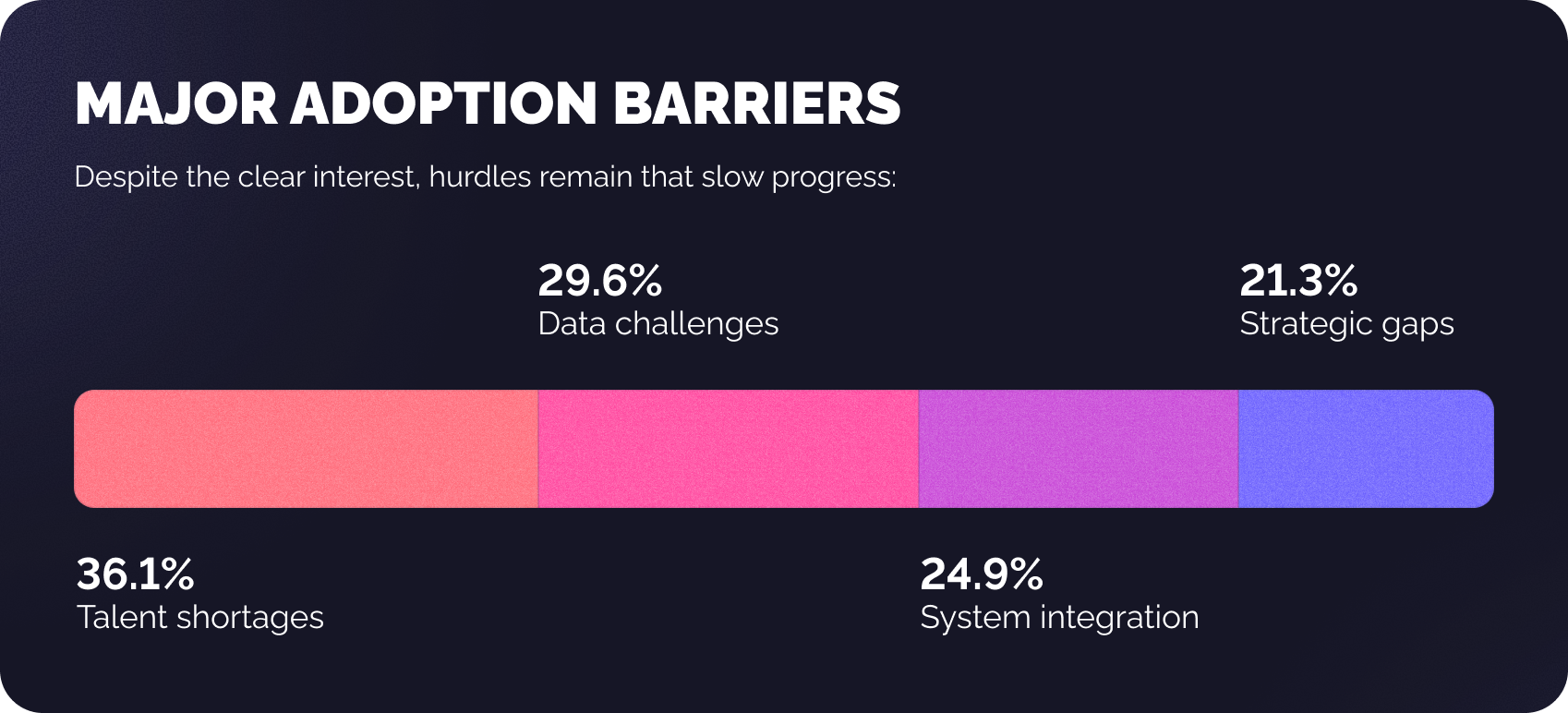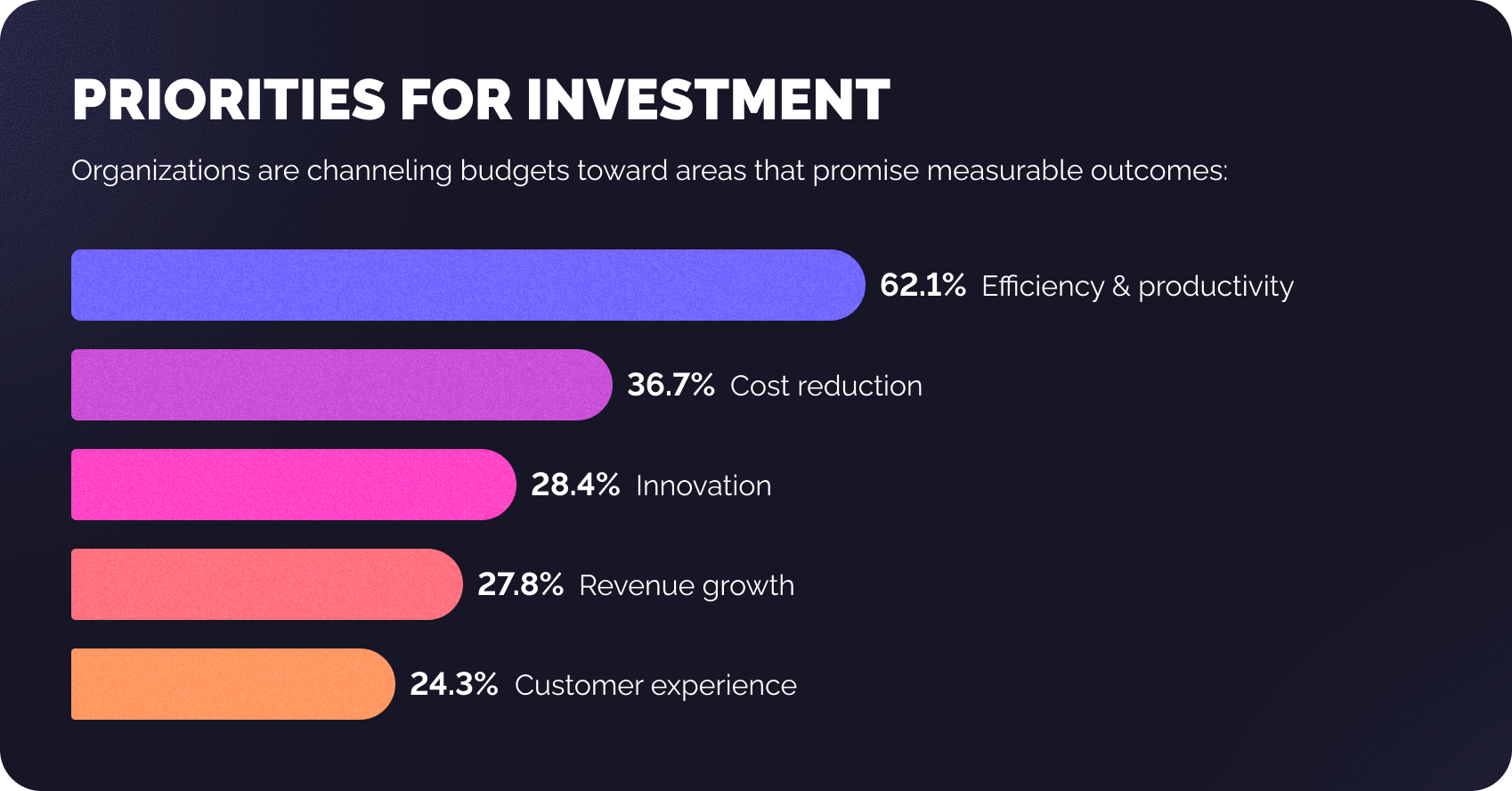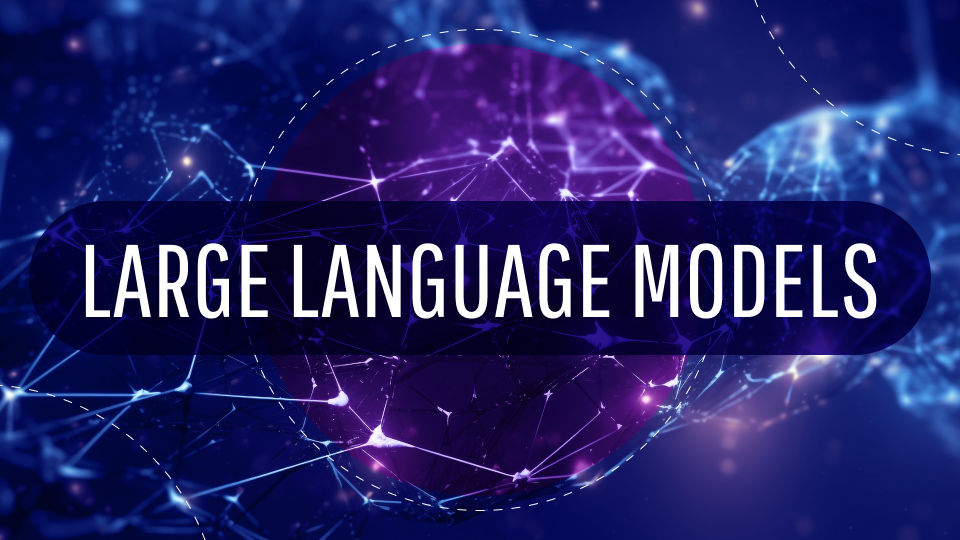Key takeaways
- Most companies struggle with integrating AI into existing systems.
- Only 25% of organizations have clear rules or governance for AI.
- Legacy systems and scattered data slow down adoption.
- Companies using structured approaches achieve faster results and measurable benefits.
- Leaders are optimistic but seek safe and practical ways to use AI.
Many enterprise leaders exploring AI adoption face a familiar problem: AI has great potential, but integrating it into business systems is challenging. At the AI4 conference, we surveyed executives from various industries about their approach to integration, governance, and ROI.
The survey shows that many are excited about AI, but adoption is stalled due to scattered data, lack of system interoperability, and governance gaps.
However, some companies have already demonstrated successful practices. Those who use structured frameworks and clear processes achieve results faster, improve workflow efficiency, accelerate decision-making, and begin to see real business impact.
These findings highlight where companies struggle and where they should focus to transform AI's potential into real value.
Current AI practices and operational hurdles
Organizations are no longer "thinking about AI". Most have already started experimenting. According to the survey, 93% of companies have at least pilot-level AI projects, and a significant portion is scaling initiatives enterprise-wide. Yet, the way AI is used varies widely across functions and industries.
Where AI delivers quick wins
Generative AI adoption shows that companies prioritize areas where immediate value is clear:
Customer service and support (53.8%) – AI chatbots and automated responses reduce repetitive workloads and improve response times.
IT and cybersecurity (40.2%) – AI accelerates threat detection and incident response.
Marketing and content creation (39.1%) – AI tools generate content faster, allowing teams to focus on strategy and creativity.

These numbers suggest that organizations are pragmatic. They first deploy AI where results are measurable, not where implementation is complex or high-risk.
Major adoption barriers
Despite the clear interest, hurdles remain that slow progress:
Talent shortages (36.1%) – skilled AI professionals are scarce, and training existing staff takes time.
Data challenges (29.6%) – fragmented, poor-quality, or siloed data prevent AI from delivering reliable insights.
System integration (24.9%) – connecting AI to legacy infrastructure is technically demanding and time-consuming.
Strategic gaps (21.3%) – a certain number of organizations lack a clear AI roadmap, leaving pilots isolated.

These hurdles highlight that AI adoption is not only about technology. Leaders must address people, processes, and data, or projects risk stagnation. To move forward confidently, businesses facing these uncertainties benefit from structured guidance. That’s where our AI Ideation Workshop comes in — a hands-on, end-to-end session where we help define your AI vision, identify use cases with real ROI, and design a clear, step-by-step implementation roadmap.
These hurdles highlight that AI adoption is not only about technology. Leaders must address people, processes, and data, or projects risk stagnation.
True transformation requires a cohesive vision. Rather than implementing scattered AI tools, companies should build an integrated roadmap that connects strategy, teams, and technology from the ground up, ensuring every department evolves together, not in silos.
Governance and trust risks
Scaling AI introduces new operational risks:
Data security and privacy concerns (36.7%) – controlling access to sensitive information is critical.
AI errors or bias (23.7%) – flawed outputs can have operational and reputational consequences.
Regulatory compliance (15.4%) – companies must navigate rules in industries like finance, healthcare, and education.
Organizations that neglect governance may see efficiency gains in the short term but encounter significant setbacks as AI expands across functions.
Workforce implications
The survey shows that AI adoption reshapes roles and responsibilities:
54.4% are upskilling employees to work alongside AI.
29.6% hire specialized AI talent.
25.4% reduction in staff due to automation efficiency.
21.3% still lack a workforce strategy, risking misalignment with AI initiatives.
These trends indicate that success depends on treating AI as collaborative, not purely automated. Companies investing in human + AI capabilities gain faster adoption and stronger ROI.

AI consultation
Your first step to AI maturity starts with a structured AI ideation workshop
Ready to turn AI challenges into a growth strategy? Book your AI Ideation Workshop with Geniusee
Read moreStructured AI approaches that actually work
While many companies struggle to move past pilots, survey insights reveal a clear pattern: organizations that adopt structured frameworks see measurable results faster. The difference lies not in AI technology itself, but in how it is integrated, governed, and scaled.
Pilots vs. enterprise-wide scaling
Nearly half of the surveyed companies (47.9%) are still in pilot phases, experimenting with both in-house and vendor solutions. The rest choose paths based on strategic priorities:
In-house development: Organizations focused on building proprietary AI solutions tend to prioritize competitive advantage and tighter integration with internal systems.
Vendor platforms: Companies looking for speed and ease of deployment often rely on external platforms to get results without heavy IT overhead.
The key takeaway is that there is no one-size-fits-all approach. Success depends on clearly defined objectives and governance, not just the choice of technology.
Turning AI into ROI
ROI is no longer theoretical. Survey respondents reported:
23.7% have observed significant gains.
36.1% report modest but tangible benefits.
Only 1.2% have seen negative ROI, highlighting that structured adoption reduces risk substantially.

Companies achieving positive ROI focus on efficiency, productivity, and repeatable processes, rather than ad hoc implementations. For example, teams using AI to automate routine reporting or customer interactions can redeploy human talent to higher-value activities, accelerating measurable outcomes.
Key success factors
Structured adopters emphasize 3 principles:
Governance: Clear rules for who can access AI, what data can be used, and how outputs are validated. Only 25% of companies currently have formal governance, but those that do scale more confidently.
Integration: Seamless connections to existing systems reduce friction and speed adoption. Organizations that invest in this step report fewer stalled projects.
Workforce readiness: Over half (54.4%) of companies are upskilling employees, ensuring humans and AI work together effectively.
By combining these elements, companies create a repeatable framework where AI projects move from isolated pilots to enterprise-wide impact without unnecessary risk or wasted resources.
Practical implications for decision-makers
Executives should see these insights as a roadmap:
Start with high-frequency workflows that can be automated safely.
Define governance and data rules upfront.
Upskill staff while selecting technology that aligns with internal systems.
Organizations follow this structured path to gain faster adoption, better ROI, and stronger confidence that AI can safely drive real business outcomes.
Looking ahead: AI budgets, investment plans, and future trends
Survey results show that enterprises are not just experimenting with AI. They are committing resources and planning for expansion. The sentiment is strongly growth-oriented, signaling confidence in AI’s long-term value.
AI budgets are growing
66.9% of companies plan to increase their AI spending over the next year.
Only 3% foresee budget cuts, while 13.6% expect budgets to remain flat.
This trend reflects a clear industry-wide belief that AI is an investment, not a cost, and that allocating resources now will pay dividends in efficiency, innovation, and competitive advantage.
Priorities for investment
Organizations are channeling budgets toward areas that promise measurable outcomes:
Efficiency and productivity (62.1%) – automating repetitive tasks, accelerating workflows, and improving operational throughput.
Cost reduction (36.7%) – using AI to optimize resource allocation and reduce manual effort.
Innovation (28.4%) and revenue growth (27.8%) – applying AI to create new products, services, or business models.
Customer experience (24.3%) – enhancing personalization, support, and engagement.

Decision-makers are clearly prioritizing projects that deliver tangible business value quickly, while balancing longer-term innovation goals.
Adoption strategies: In-house vs. vendor
The survey indicates that half of the companies build AI systems by themselves, while the other half rely on vendor platforms. This shows that companies are still testing what fits their infrastructure, teams, and compliance needs.
Talent and workforce planning
Future AI success will hinge on people as much as technology:
54.4% of companies upskill employees to manage AI tools and workflows.
29.6% hire specialized AI talent.
25.4% of organizations reduce roles due to automation, while 21.3% lack a workforce strategy.
Companies that align workforce planning with AI deployment are more likely to scale initiatives safely and capture full ROI.
The path forward
If you plan AI implementation, take into consideration the following steps for the next 12–24 months:
Increase AI budgets strategically rather than across the board.
Target projects that improve efficiency and create measurable financial or operational impact.
Ensure talent pipelines and upskilling programs are in place to avoid bottlenecks.
Maintain governance and compliance frameworks to mitigate risk as AI scales.
Roll out AI step-by-step and measure what really makes a difference (time savings, Automation rates, revenue increase, cost reduction, etc.)
Leverage AI across the whole company, not just individual departments.
Geniusee expertise in enterprise AI: Turning complexity into results
Scaling AI in large organizations is rarely straightforward. Enterprises face fragmented systems, messy data, and talent gaps, and without structured guidance, pilots often stall before delivering real impact. Geniusee brings hands-on experience in navigating these challenges, helping companies turn AI initiatives into measurable outcomes.
The introduction of Imagine AI quickly proved its impact. During the first implementation phase, Forsyth Barnes (an early adopter of the platform) experienced major efficiency gains. Automated candidate sourcing and intelligent resume processing reduced sourcing time by up to 90% and minimized manual effort by 85%. As a result, their HR teams shifted focus from repetitive operations to strategic, high-value work.
This case highlights how meaningful AI adoption depends not only on advanced models but on seamless workflow integration, security, and real usability for teams.
Conclusion
Enterprises are eager to adopt AI but face fragmented systems, data gaps, talent shortages, and governance challenges. Without structured integration into workflows, pilots rarely deliver measurable results, and adoption can stall despite enthusiasm and investment.
Leaders should focus on embedding AI thoughtfully, aligning technology with teams and processes, and systematically addressing adoption barriers. If you want a reliable partner to navigate these challenges and turn AI potential into real business impact, contact Geniusee AI experts.





















